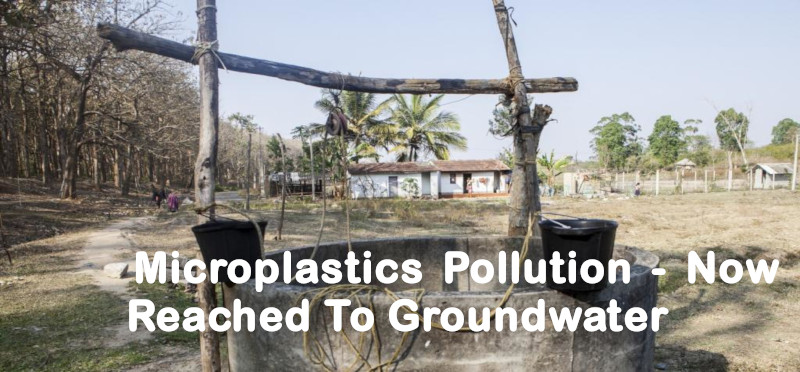
In News
- A new study found that the micro plastic pollution has now reached the groundwater sources which is known to contaminate surface waters.
Highlights of the Study
- As per the results of the study, fractured limestone aquifers -a ground water source – accounting for 25% of global drinking water supplies are being contaminated by micro plastics.
- The researchers found microplastic fibres, medical and household contaminants in the groundwater.
- The research was conducted in two aquifers in the U.S.
What are Micro – Plastics?
- Plastics when exposed to environmental stresses breakdown into microplastics.
- A piece of plastic less than 5 millimeters in length is known as micro-plastics.
- They are classified into two types: Primary micro-plastics and Secondary microplastics.
- Primary micro-plastics – these are made as micro-plastics for specific uses such as in cosmetics, drugs, cleansers etc.
- Secondary micro-plastics – these are formed from the breakdown of large plastic materials. This degradation may be due to biological reasons, photo degradation due to sunlight, chemical degradation etc.
- These adversely impact the environment. They have especially impacted the marine ecology. Recently, microplastics are found even in deeper parts of the earth in the Mariana Trench.
Impact of Micro Plastics
- These minute particulates bio-accumulate in the bodies of the fish and other marine life exposing them to toxic chemicals present in the plastics.
- They often block the digestive tracts and alter the feeding behavior of fish, turtle and birds.
- In the oceans, plastics breakdown and attract microbial life. This further finds its way into the food chain supply.
- This food when consumed by individual humans has the potential to disrupt their endocrine systems.
Sources of Micro Plastics
- Clothing industry
- Cosmetics industry
- Detergents
- Certain manufacturing processes
- Car and truck tires
- Packaging and Shipping industry
- Sewage sludge
- PET bottles
- Toothpastes
- Apart from the above there are many more sources of primary sources of micro plastics.
Also, Read: SANH Secured Funding To Study Nitrogen Pollution in South Asia
Indian Scenario
- Indian manufactures are rampantly using microplastics in their products. From toothpastes to cosmetics, the everyday products we use have micro plastics in them.
- Up until 2018 there was no comprehensive study on the presence of micro plastics in cosmetics.
- In 2018, Toxics Link, a New Delhi-based organisation confirmed the presence of micro plastics in Indian cosmetics.
- As per their results, 50% of face wash products and 67% of face scrubs from the country have micro-plastics in them. Especially used in them are microbeads.
- Micro beads are plastic parties less than 1 mm in size. They are most commonly used in cosmetics.
- Countries like UK, US and NZ have already banned the use of these micro beads in cosmetics.
- In India, the Bureau of Indian Standards (BIS) have submitted a report to the National Green Tribunal (NGT) on the presence of micro pastics in Indian cosmetics.
- NGT had given notices to the government on how it is going to tackle this environmental hazard.
The government of India is yet to tackle the issue.
Conclusion
Since the invention of plastics in the 1860s, it has immensely helped humanity in their advancement. But, the adverse effects of plastics usage in the form of Great Pacific Patch, microplastics pollution etc have come into light recently.
Just like climate change which is gaining full attention of world governments, micro plastic pollution too needs urgent attention to protect our marine resources.
Already countries like the UK, the US and others have taken steps to tackle the problem. Private enterprises too have taken conscious steps to reduce the usage of harmful plastics in their products.
In India too, many states have banned single use plastics. But, it is the lack of proper enforcement of the ban is failing the intent.
In this need of hour, the public, the government and the private enterprises must come together to tackle microplastics pollution.
Latest NEWS: ISRO Successfully Launches Microsat-R

Leave a Reply
You must be logged in to post a comment.